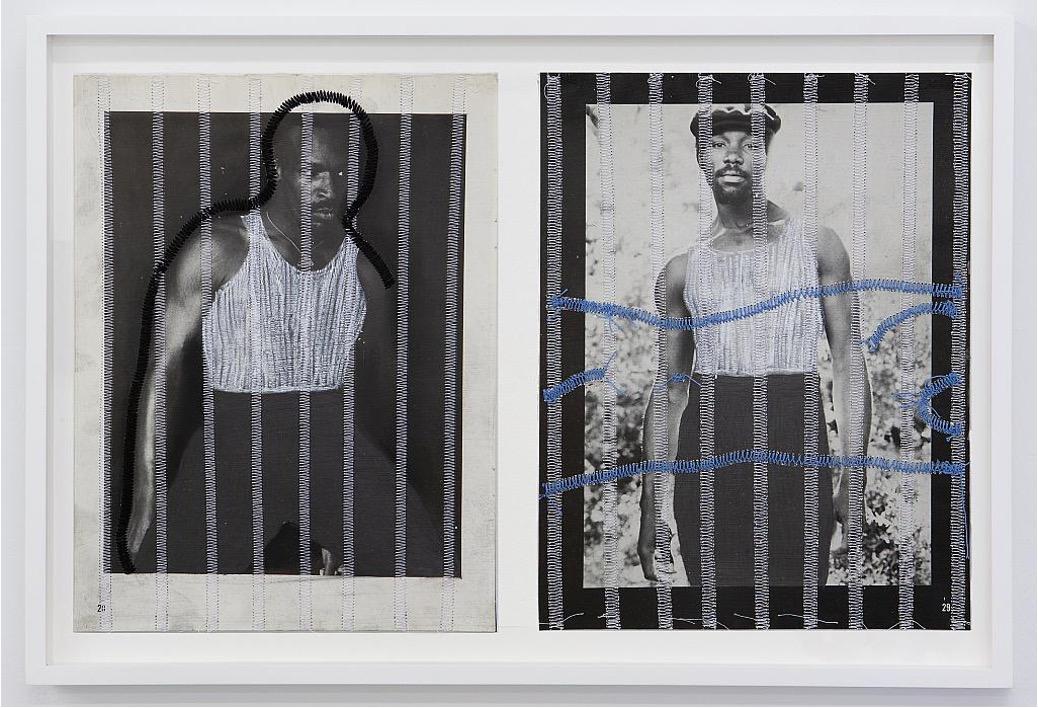Myths about sexuality have been used to justify the exploitation of the black female body. Sarah Baartman, for example, was a woman who was stolen from South Africa and exhibited in Europe in the early 19th century. She was advertised as the “Hottentot Venus” and audiences would pay to see her large buttocks. As Carla Williams and Deborah Willis say in their book Black Venus 2010: They Called Her "Hottentot," “The combination of sexuality and public display was possible only because of Baartman’s blackness. A European woman of any class could never have been exhibited in this manner, but such a display of an African woman could be tolerated as science, if not as entertainment.” I am interested in this comparison between the sexualities of white women and black women, and the line between sex and science. A white woman’s dignity has always been seen as something that needed to be protected, while Black women aren't protected; because they are seen as jezebels, the mistreatment of their bodies is warranted. Baartman was exhibited because Western scientists wanted to prove that black people were inferior to white people, and it is clear that her performances were based around sex. In an 1810 caricature by William Heath entitled A Pair of Broad Bottoms, there is a measuring tool being used on Baartman’s bottom, clearly indicating that there was an awareness of her buttocks being considered a curiosity of nature and an object of desire. Nineteenth-century Swiss biologist Louis Agassiz also blurred the lines between research and sex. One of the most famous photographs commissioned by Agassiz is of an enslaved woman named Delia. Agassiz believed in polygenesis–the idea that the races were created separately and unequally–and wanted to prove this through photography. 1 His enslaved subjects were made to strip naked; Delia, for example, has her breasts completely exposed. These photos inspired the work of scientists and other photographers. Le Négre a L’éventail, for example, is a “scientific” photograph that is also meant to be pornographic because of the man’s suggestive pose.
Agassiz’s photos are a reflection of the fetishization of black homosexuality. As Shneider writes, “While women’s bodies and sex organs had long been the subjects of scientific and salacious scrutiny, early materialist taxonomies had almost exclusively limited their comparisons between men to the region above the neck. As Allan Sekula notes, ‘the lower regions [being] shaded off into varieties of animality and pathology.’ The emphasis on black men’s penises were not only meant to provide people with homosexual gratification.” Today, we have seen how these stereotypes are perpetuated in gay porn. Gay black porn stars are forced into pandering to the white male gaze as a means of survival. Artist Troy Michie addresses this in America Is Woven of Many Threads, a multimedia work that uses nude found photos of gay black porn stars which Michie covers with colored pencils and markers to protect them from being objectified.
Artists like Renée Cox have discussed the fetishization of black people. Her self-portrait titled Hot-en-Tot is a tribute to Sarah Baartman, reflecting on Cox’s own experiences of being subject to hypersexualization. Her photomontage titled Yo Mama's Last Supper highlights racism and sexism in the Catholic Church, and was criticized by politician Rudy Giuliani, who accused Cox of blasphemy for posing as a nude female Jesus. Artistic depictions of biblical figures throughout history, such as Michelangelo’s David, are also nude–but I do not think Rudy Giuliani is upset about Michelangelo's work, because the white man’s body is seen as a work of art. Ancient Roman sculptures were originally painted in colorful hues. Because the paint faded over time, many Renaissance artists believed the sculptures were white. Art historian Johann Joachim Winkelmann bolstered the myth by writing that the Apollo Belvedere was beautiful because of his white body. Cox made the most important figure in Christianity a naked black woman. Black women’s bodies are linked to lust, so Giuliani subconsciously connected Jesus–the paragon of purity–to porn.
The hypersexualization of the black female body has also made its way into popular culture. The hip hop industry highlights this phenomenon perfectly– specifically the genre of female rap. Although many people complain that female rappers only rap about sex, I would argue that they do so because they are expected to. Cardi B addressed this on Twitter two years ago when Jermaine Dupri made a similar comment: she stated that when she dropped “Be Careful”–a song about her relationship–people did not want to hear it. Her sales increased when she returned to rapping about sex, twerking, and money.2
The black community has internalized this sexualization. Twerking, for example, is rooted in an Ivorian dance called Mapouka, which involves the shaking of the buttocks.3 Similar dances include Borborbor, a traditional dance of the Ewe people, many of whom live in present-day Ghana. Black artists all over the world have become rich off of the sexualization of the dance while ignoring where it came from, and while continuing to enrich the predominantly white music industry.4
Abena Gyampo is a student at RISD and developed this project for a 2021 course taught by Dr. Jane'a Johnson, Photography and Race: Blackness and the Self.
- 1Schneider, Suzanne. "Louis Agassiz and the American School of Ethnoeroticism, Polygenesis, Pornography, and other Perfidious Influences.” Pictures and Progress: Early Photography and the Making of African American Identity. Duke University Press Books, 2012, 211-243
- 2Belcalis Almánzar [@iamcardib]. (11 June 2019). SUPPORT SUPPORT SUPPORT [Tweet]. Twitter. https://twitter.com/iamcardib/status/1149420948564664320
- 3A, Erica. “The Origins of Twerking: Where it All Began”. Black Then. n.p. 21 Jan. 2019. https://blackthen.com/origins-twerking-began/#:~:text=The%20origins%20of%20twerking%20ca n,of%20movements%20emphasizing%20the%20buttocks.&text=The%20term%20twerking%20c omes%20from,Orleans'%20early%2090s%20bounce%20scene.
- 4Mason, Amelia. “What the Rise and Fall of Black Leadership in the Music Industry Says About Equality Today”. WBUR. WBUR. 5 Oct. 2016. https://www.wbur.org/artery/2016/10/05/black-leadership-music-industry
